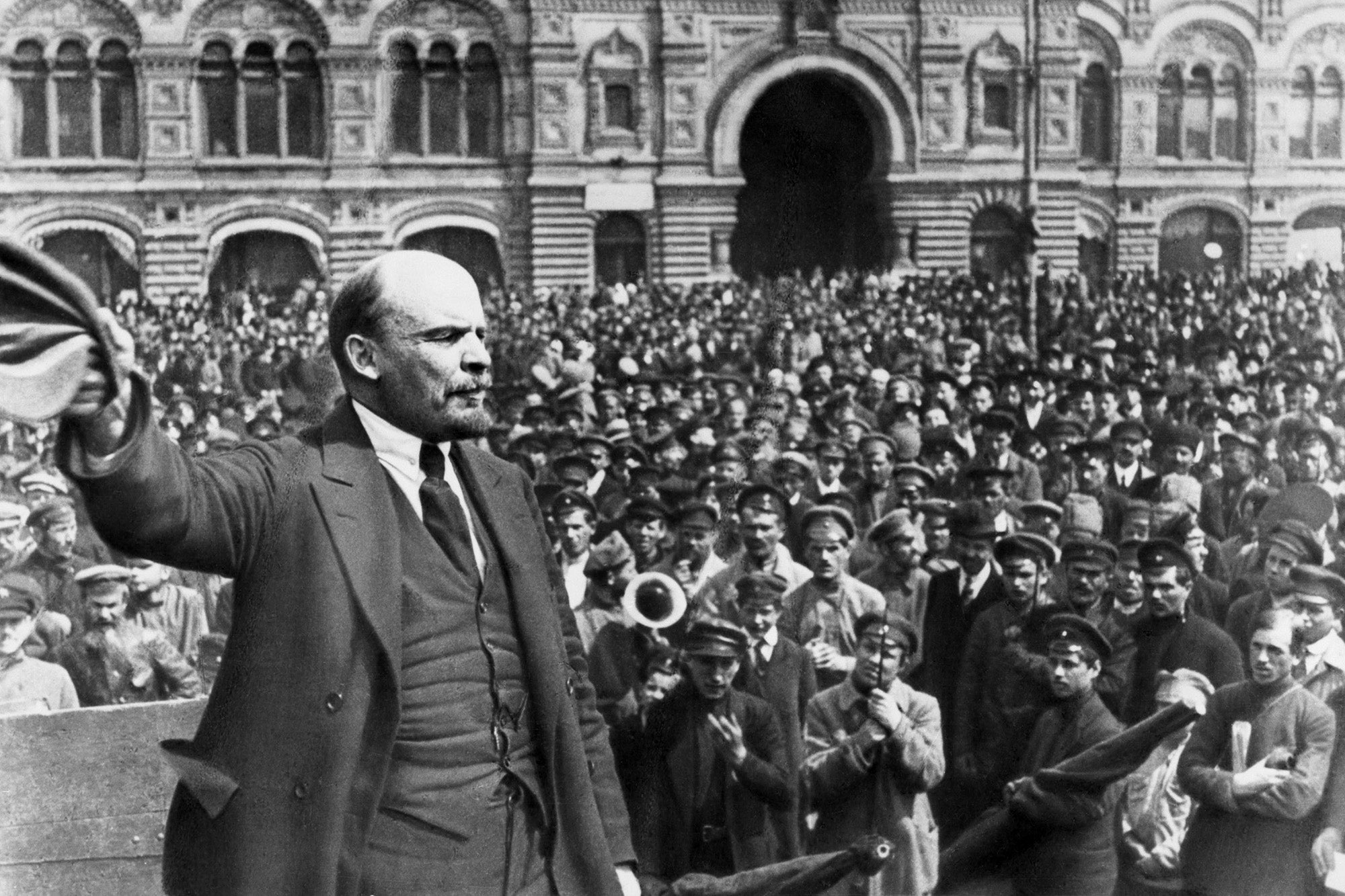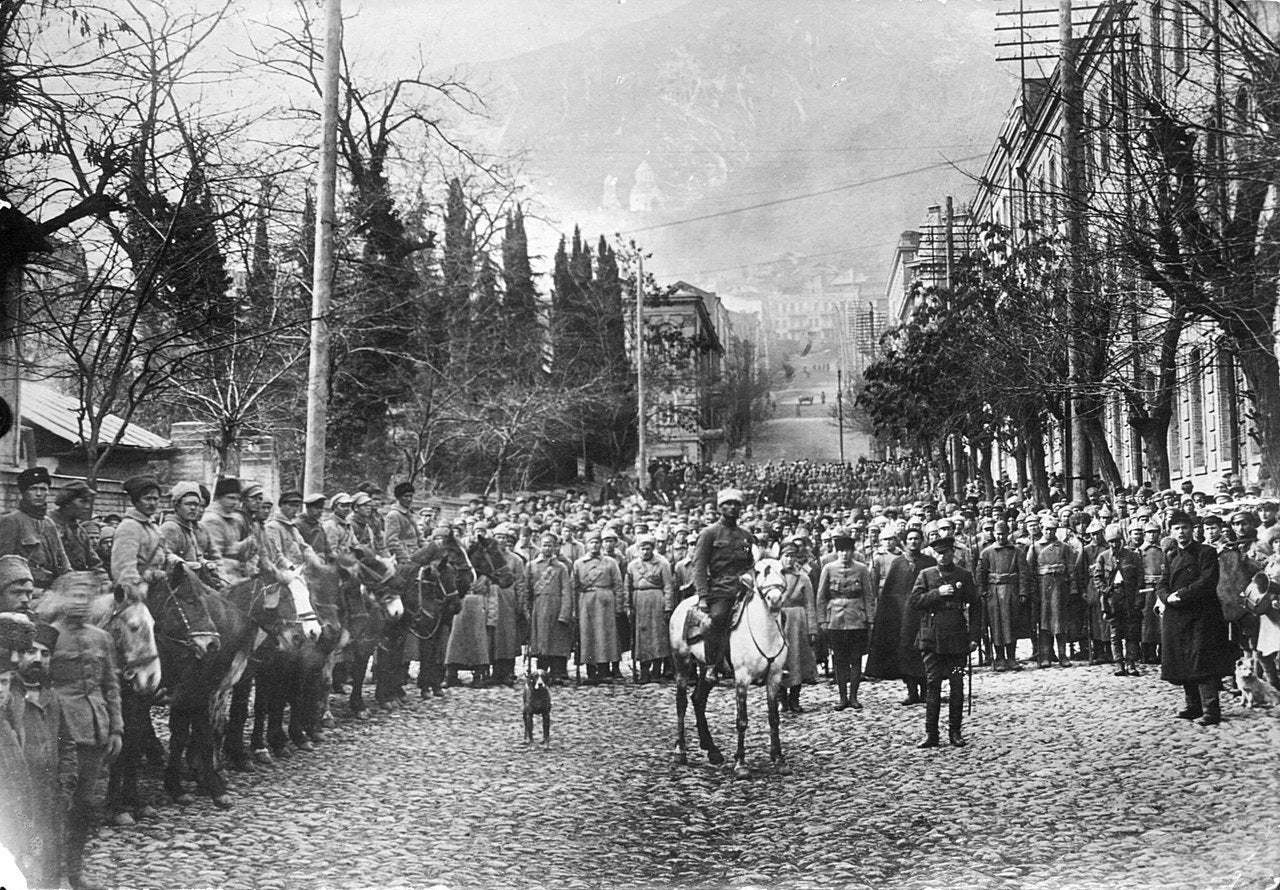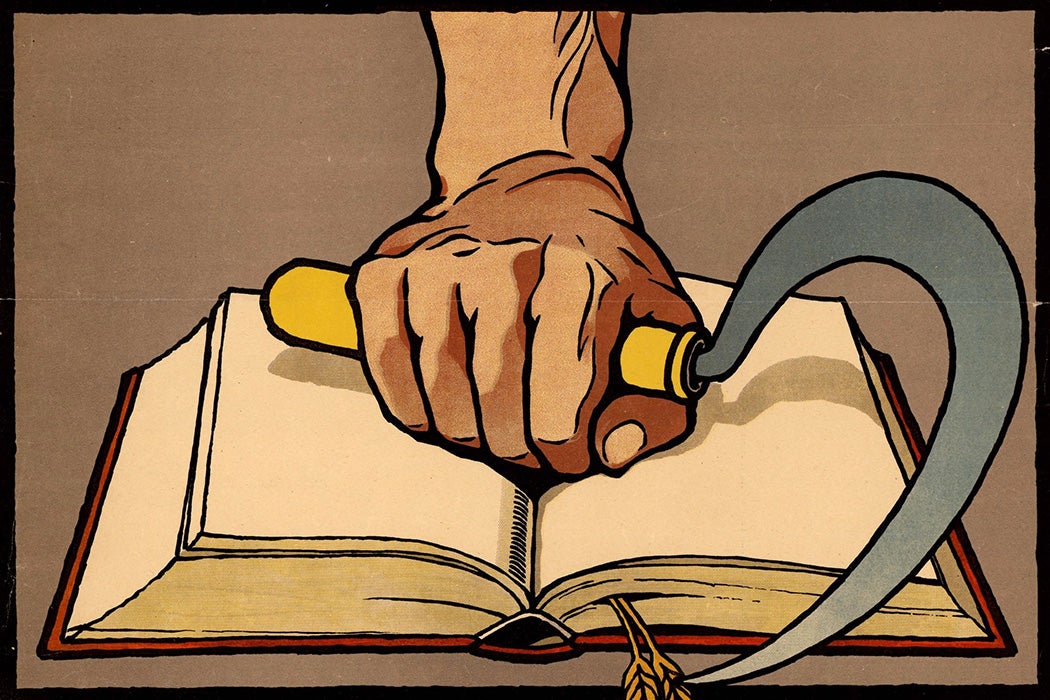One hundred years ago, at the end of December 1922, the Union of Soviet Socialist Republics (USSR) was born. A little more than five years after the end of the Russian Revolution that brought the Tsarist Empire to an end, a multi-ethnic nation-state that promised a socialist future and the protection of national identity was established out of the chaos of civil war. Vladimir Lenin, the creator and first leader of the Soviet Union, had denounced Tsarist Russia for holding Russians and non-Russians in a “prison of nations.” His new Soviet Union would unite the exploited masses of the old Tsarist lands in a country that was “national in form, socialist in content.” The economic and political systems were to follow a socialist line of development in the pursuit of leading the people to communism, but the culture and traditions of the individual Soviet republics would be allowed to continue. The Russification of the Tsarist era was over, as was the Russian chauvinism that Lenin despised.
However, as was so often the case in Soviet history, the reality of this new way of life didn’t live up to the promises made by the Party bosses in Moscow. What emerged was a huge nation that forced millions of people into a federation initially made up of Russia, Ukraine, Byelorussia, and the Transcaucasian republics of Armenia, Azerbaijan, and Georgia. Over the next two decades, the USSR became the world’s largest country (building on what was already the world’s largest country, Russia) as new republics were added from the lands that surrounded Russia and that had made up the old Tsarist empire. These included the Baltic States, which were incorporated against their will as part of the Nazi-Soviet pact signed in August 1939. By the end of the 1940s, the Soviet Union was one of two nuclear superpowers, and it remained in a cold war with the other superpower—the United States—until Mikhail Gorbachev oversaw the breakup and collapse of the Soviet Union in December 1991.

The huge new nation created by Lenin in 1922 was far from what he believed would emerge from the revolutionary upheaval of 1917. His Marxism was outward-looking and internationalist, and he rejected patriotism and nationalism. And although, as David R. Marples notes, the USSR initially “saw a flowering of national cultures in republics like Ukraine and Belarus, and especially the growing importance of national languages,” Joseph Stalin moved away from this policy in the 1930s by centralizing authority and concentrating more power in the hands of the Party leaders in Moscow. The story of the creation of the Soviet Union was therefore one that began with the overthrowing of the Tsar and the promise to free Russia’s exploited masses and ended with the birth of a powerful, bureaucratic, and undemocratic state that killed off the hopes of the Russian Revolutions.
The Revolutions and Civil War: The Prison Gates Pushed Ajar
The creation of a state like the Soviet Union wasn’t the inevitable outcome of either of the revolutions of 1917. Both the February Revolution and the October Revolution could have followed different paths and different leaders to define post-Tsarist nations. Part of the debate—and part of what prolonged the civil war that followed the Bolshevik-led October Revolution—was based on the concept of national self-determination. People across the Russian Empire freed themselves from the shackles of Tsarism in 1917. Russian control was swept away and once-oppressed nations were granted autonomy. They then set about establishing new states, free from Russian governance.
Ukraine was just one of many states that rapidly took steps toward confirming its independence. The formation of Ukraine’s parliament, the Central Rada, confirmed Kyiv’s move away from Petrograd’s control even as the February Revolution unfolded. Cultural freedom was promoted, the Ukrainian language became more prevalent in schools and the press, and in April 1917, the Rada was declared as the supreme national institution. The Provisional Government in Petrograd, however, continued to be less than enthusiastic about granting Ukraine its autonomy.
Today, President Vladimir Putin blames Lenin for creating the modern-day Ukrainian state. (For Putin, the USSR’s collapse was “the greatest geopolitical catastrophe of the century” and, according to Natalia Chaban, Henrietta Mondry, and Evgeny Pavlov, if he “had a chance to alter modern Russian history, he would reverse the collapse of the Soviet Union.”) But blaming—or crediting—Lenin with Ukrainian independence is misguided. As Serhii Plokhii has noted, “Lenin was indeed central to the formation of the USSR.” But as far as an independent Ukraine, it came into existence “not thanks to Lenin but against his wishes.” Lenin concluded that independence plus compromise over culture and language were essential to maintaining communist control of Ukraine.
The Bolsheviks were wary of Ukraine’s push for autonomy, and after the October Revolution, when the Rada proclaimed independence, Lenin’s party in Kharkiv declared a Soviet Republic instead. Confusion and conflict continued, but in January 1918, indigenous superiority was confirmed when the Rada established the Ukrainian People’s Republic. Armed conflict between Bolshevik and non-Bolshevik forces continued until Ukraine became a constituent republic of the Soviet Union in 1922.

In the post-revolutionary Caucasus, the Russian Provisional Government maintained a strong presence by forming the Special Transcaucasian Committee. This brought together representatives of Armenia, Azerbaijan, and Georgia, while Russian dominance was asserted by Vasily Kharlamov, a Kadet deputy from Russia’s Fourth Duma.
The Committee lasted until the Bolsheviks came to power, at which point a new body—the Transcaucasian Commissariat—replaced it. Based in Tiflis (modern day Tbilisi, Georgia), Armenia, Azerbaijan, and Georgia had three representatives each in the Commissariat, while Russia had two. The main leaders were Mensheviks (who were well represented by Georgians), Socialist Revolutionaries, Dashnaks (Armenian nationalists), and Musavatists (Azeri Pan-Turkists). The Commissariat’s anti-Bolshevik position saw it reject the new Soviet government’s authority, and it sought to withdraw Transcaucasia from Soviet Russia. In February 1918, against the backdrop of both the Russian civil war and the Russian-Central Powers peace talks (the Treaty of Brest-Litovsk would end Russian participation in the Great War), the Transcaucasian Democratic Federative Republic was proclaimed, to be formally established two months later. Nikolay Chkheidze, the Georgian Menshevik leader of the Petrograd Soviet after the February Revolution, became its first leader.
The desire to free these nations from Russian rule was clear, and Georgia impressed international observers with the formation of the Menshevik-led Democratic Republic of Georgia, with Tiflis as its capital. As future British Prime Minister Ramsay MacDonald wrote when he visited the country in 1920, the Georgians were democrats who had their revolution “without shooting an opponent, except when they were invaded [and] without suppressing a journal.” They had “elected a Constituent Assembly, formed a temporary coalition [and] held a regular general election on adult suffrage, with full protection for all minorities.” This didn’t last though, as Georgian independence was ended by force when the (pro-Bolshevik) Red Army entered Tiflis in February 1921. With this came the move to form the wider Transcaucasian Federation in March 1922, tying the formerly independent Armenia, Azerbaijan, and Georgia together.
The Making of the Soviet Union
Prior to the revolutionary events in 1917, the right to national self-determination was promised by leading Bolsheviks, including Lenin and Stalin, who would become Lenin’s Commissar for Nationalities. The party had long railed against imperialism and continued to debate its position on nationalism. Stalin’s Marxism and the National Question of 1913, argued that “A nation has the right freely to determine its own destiny. It has the right to arrange its life as it sees fit, without, of course, trampling on the rights of other nations. That is beyond dispute.” And Lenin’s Imperialism: The Highest Stage of Capitalism, written in 1916 and published in 1917, denounced the First World War for being “imperialist (that is, an annexationist, predatory war of plunder) on the part of both sides; it was a war for the division of the world, for the partition and repartition of colonies.”
Get Our Weekly Digest for Free
Both interpretations made clear the communist opposition to imposing and exerting control from outside a nation’s borders, but the Declaration of Union and Treaty of Union that brought the Soviet Union into being would facilitate just this. Moscow’s rule in the 1920s was not yet as complete as it would be in the following decade, when Stalin centralized control, but the debates over the nature of the new state made leaders in the Soviet Republics uneasy, and they proved to be a forerunner of Stalin’s plans for the future.
Lenin clashed with his Commissar for Nationalities over Stalin’s push for the integration of non-Russian republics into the Russian Soviet Federative Socialist Republic as autonomous republics. The leaders of these republics feared too much Russian power, and they were concerned that they could lose their right to secede from this union. They were right to be worried, as in theory this was protected but in practice there was no right to secession. Lenin sided with them against Stalin, and he agreed with their concern about Russian domination. However, real power continued to remain in Moscow, despite the supposedly devolved nature of Soviet power. Some areas, such as language, culture, and schooling, did prosper, but they did so only until the following decade when Stalin centralized power even further.
The End of the Russian Revolution
The Russian Revolution that promised—and for a time delivered—freedom to the peoples of the now former Tsarist Empire ended with the creation of the USSR. The aims of the February Revolution were never as clear or obvious as the aims of Bolshevik revolution in October, but one of its consequences was the awakening of the consciousness of nations and the belief that self-government could follow. The sense of freedom and the belief in the right to national self-determination took control and helped to define the revolution’s purpose. But the forceful inclusion of nations into the USSR—either in 1922 or later—means that this was the point when the spirit of 1917 died.
Gone now was “the right of the peoples of Russia to free self-determination.” This promise was made by the Bolshevik government shortly after the October Revolution. Yet instead of enshrining the freedom of the former peoples of the “prison of nations,” the 1922 treaty embodied the notion that the world’s proletariat—including those who were once oppressed by the Tsar—was best served by a new nation whose purpose was to challenge global capitalism.
The turbulence of the previous five years continued into the more peaceful era after the Civil War, but the Bolshevik Party had been changed by this conflict. It was now more militarized, and force was often seen as a solution to many problems. Indeed, in the previous year, Lenin sent the military to crush the Kronstadt Rebellion and suppressed the demands of sailors who had loyally defended the Bolshevik cause in 1917. The creation of the Soviet Union, and the subsequent Stalinist centralization in the 1930s, ended of the dreams of national self-determination for millions of people and ultimately helped to kill off the hopes of many of the revolutionaries of 1917.







